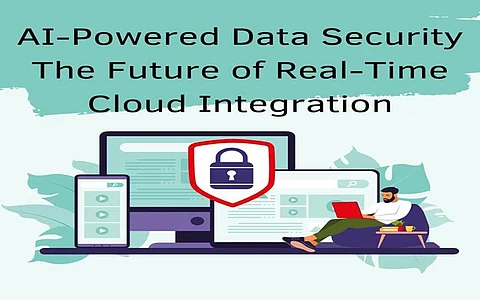

In this rapidly growing digital era, data security, and governance have become critical concerns as organizations process massive volumes of information daily. AI-driven systems are emerging as game-changers, reshaping how businesses maintain security and compliance while optimizing operational efficiency. Siddharth Kumar Choudhary, a recognized researcher in AI-driven security, explores these groundbreaking innovations in his work.
Trained on the data up to October, 2023. Classical data governance frameworks have been found insufficient when it comes to measuring up against the boom-and-bust cycles of digital data. Today, an AI-driven solution offers the benefit of real-time compliance monitoring with almost perfect accuracy: those applications use machine learning algorithms to detect anomalies in real time, reducing the need for human intervention while ensuring consistency with global regulations.
The present AI-based compliance management can process millions of transactions a second and does so with utmost accuracy. Policy enforcement with automation is the new normal while adapting to the fast-changing landscape of regulations, thus minimizing response time and maximizing overall efficiency in governance frameworks.
As the evolution of cyber threats multiplies worldwide, organizations' risk detection and mitigation processes have been revolutionized through AI-based security systems. Behavioral analysis models perform millions of user interactions a day to identify suspicious activities with almost perfect accuracy. The systems adapt in real-time to emergent threats, therefore significantly reducing false positives compared to conventional security.
AI-based anomaly detection techniques further enhance the productivity of organizations via neural network applications to model intricate patterns and make decisions that will keep it safe from possible future zero-day threats. The security prediction response will have flown well in front of any possible breach thanks to real-time risk assessment.
Quantum-resistant cryptographic methods are encouraged by AI-driven encryption mechanisms. These systems perform millions of encryption operations per second, adapting the strength of encryption to the real-time done threat intelligence. Such organizations use the automated key management and data classification to conform with the appropriate safeguard of sensitive information such as never before.
End-to-end encryption systems that were previously only locked in buildings are now fully functional within cloud environments without compromising data integrity and improving data processing speed. These developments will, in turn, shrink vulnerability levels significantly and increase the level of secure data transmission across different networks worldwide.
The Role of AI in Real-Time Access Management
Access control is a critical aspect of contemporary cybersecurity enriched by enhanced AI accuracy. AIML-based access control systems evaluate behavioral biometrics, device attributes, and historic access patterns to minimize unauthorized entries.
The intelligent access control mechanisms process millions of authentication requests per hour with near-zero error. Organizations are now able to formulate dynamic security policies in real-time that adapt to changing risk levels, ensuring seamless yet secure user access.
In self-healing systems, which it is considered one of the most promising developments in AI-driven security, there is an application of predictive analytics to foresee possible system failures before they occur. AI models predict security risks based on historical data as well as performance metrics of current operations.
Self-healing security mechanisms can take care of over 90% of vulnerabilities found in their environment without any human intervention. This improves system uptime, operational resilience, and constantly adheres to security compliance.
AI-based security frameworks require a strong computation infrastructure to process huge volumes of data in strides. High-performance processors-GPU and TPUs-execute AI models within very short timeframes, whereas huge memory configurations ensure smooth processing of incoming data. Optimized network architectures support real-time communication, thus minimizing potential delays in the detection and response to security threats.
AI-optimized storage systems are now in place for petabyte-scale data governance, ensuring compliance with regulations while permitting streamlined access to essential security insights. Along with edge computing, this resonates with the de-centralization of security operations, which, in turn, reduces the dependency on centralized data centers and promotes real-time mitigation of threats. With edge AI, latency could be reduced by processing data closer to the source, thus enhancing cybersecurity defenses. This technology is now at the disposal of enterprises to effectively tackle sophisticated security challenges while keeping system resilience and operational speed intact.
The integration of quantum-resilient encryption with modern AI algorithms will strengthen data security significantly, rendering it resilient against emerging cyber threats. AI-enabled security systems will utilize self-learning models to adapt the governance strategy, thus ensuring that organizations can respond promptly to an ever-changing regulatory landscape. The future of AI in data protection focuses on automation, predictive analytics, and intelligent enforcement of policy. Automated detection of potential threats and timely responses will proactively reduce risk, whilst compliance management will be augmented by AI-generated insights. Utilizing state-of-the-art AI frameworks, organizations will create higher security thresholds and enhance operational effectiveness. The confluence of AI and cybersecurity will engender an intelligent and adaptive defense structure, ensuring integrity, confidentiality, and regulatory compliance for data in the challenging digital environment.
It is indeed true that Siddharth Kumar Choudhary's research very precisely showcases the transformative effects of AIdriven security solution systems, from real-time governance to predictive threat detection and selfhealing security frameworks-in short, a complete blueprint for the future of cloud data integration, as these advances shape the future for all organizations embracing them in their quest for the ultimate in security, compliance, and operational excellence.
